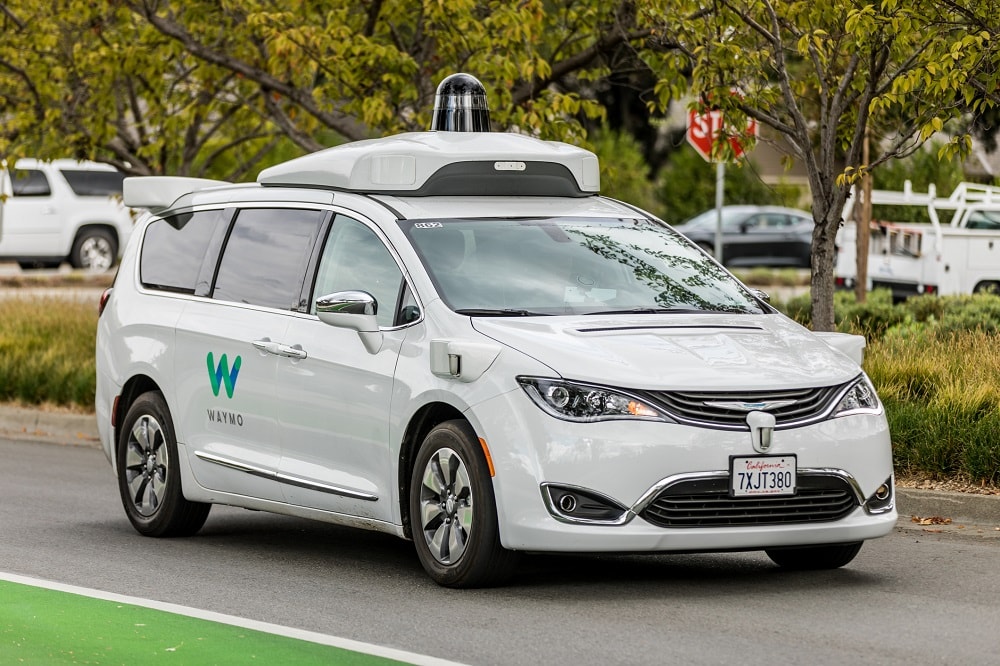Imagine walking out of your house to head to work. As you approach the driver door, it automatically slides open. “Good morning! The drive to work will take around 23 minutes. Would you like me to pull up the news?” As you enter the backseat of the car and look over the route map, a popup at the corner of the screen shows the latest superhero movie showing at a nearby theater. “Close ad.” The seat reclines back to your preferred setting, and the seat belt fastens around you safely. Fast forward to pulling up onto the highway and the car sends a signal to nearby cars to allow for a smooth transition into the right lane. All of this is done while you drink your coffee and read the news on the onboard monitor.
What may sound like a scene from a science fiction movie is not too far off in the future. Autonomous vehicles, more often called self-driving cars, are a quickly growing sector of the automotive industry. Tech and car companies are working in tandem to make self-driving cars safer every year. In 2016, then Google spokeswoman Jacquelyn Miller stated that Google clocked in 1.8 million miles with their self-driving vehicles with only 13 minor accidents. Since then, Google’s autonomous car project, rebranded as Waymo, has reached 3 million miles, 1 million of which was in a 7 month span. The safety statistics of the technology is undeniable, but despite the data, many people are still very hesitant to hop on board with the idea.
Major Concerns with Self-Driving Cars
It’s understandable. With any new technology there is a hesitancy that comes with trying it out for the first time. Anyone who has ever been in a self-parking car can attest to the uneasiness that they felt the first time the car acted on its own. It is a foreign feeling to lose control of something we are so used to having control over, especially when it comes to something as potentially dangerous as a car. This article will discuss the obstacles that self-driving car companies will face in the future, as well as solutions for dealing with these obstacles.
 Safety
Safety
The most significant obstacle in the way of self-driving technology is the lack of consumer confidence in it despite an amazing track record. In general, people are hesitant to put too much trust into the reliability of technology, especially if it is still relatively new. Murphy’s Law states, “Anything that can go wrong, will go wrong”. The statement is an exaggeration, but when it comes to modern technology, everyone has been in a situation in which it has broken down when it was needed most. It’s an even bigger inconvenience when that technology is something we greatly rely on – like a car.
That being said, if the self-driving capabilities of a vehicle malfunction halfway through a trip, the risks are far greater than if a printer were to break down when trying to finish a college paper. The breakdown of a self-driving car is not something people are willing to take a risk on. That is one of the main reasons the general populace are not yet ready to accept such a drastic change in the way we drive.
Cyber Security
In the internet age where all of our devices are connected to a network, life has become much more convenient. At the same time, we have given cyber attackers an avenue through which to target our information and personal property. This includes things such as our vehicles, with self-driving cars at the forefront of that integration. Though unlikely, some people fear that because a car can drive independently of the driver, it can also be hacked into remotely by people with ill intentions. Whether this is a realistic and significant problem, or a product of watching too many sci-fi movies, is up for debate. Regardless, to ease the minds of drivers, self-driving car companies like Waymo have partnered with computer tech companies like Intel to improve the quality and security of autonomous technology.
Privacy
Another major concern consumers have when it comes to self-driving technology is in regards to privacy. It is in the best interest of companies that sell these cars to collect the day-to-day driving information of customers and use it improve the quality of navigation for the future. That being said, there is concern that this information might also be sold to other companies. Information ranging from driving behavior to where you go to shop. One of the major points in the 15-point safety checklist created by federal regulators in September 2016 was privacy. According to the checklist, consumers need easy access to the type of data that is to be collected as well as a way to reject the collection of personal data, like driving behavior.
 Fear of a Loss of Control
Fear of a Loss of Control
The overarching reason people are opposed to self-driving cars is because of the loss of control that they represent. As technology becomes more advanced, our life become more automated and that scares people on a certain level. With current events making everyone feel that they have no real control of their security and privacy, the concern is understandable.
The solution most used by autonomous technology companies is to slowly include aspects of self-driving technology in existing cars. Features such as self-parking, automatic braking, and adaptive cruise control are just some of the new technologies that are becoming standard in cars today. Though these seem minor in their automation when compared to the self-driving cars being tested on the road, they are an important step in convincing the public that they should not be afraid. These are known as safety features, not infringements on personal control, and that is the main goal of self-driving cars: road safety.
Though self-driving technology won’t be quite as advanced as in sci-fi movies like I, Robot and Minority Report anytime soon, it is a quickly growing industry. It is impossible to know exactly what our roads will look like in 50 years, but one thing is for sure: self-driving cars will play a huge role in shaping how we think about transportation in the future.


